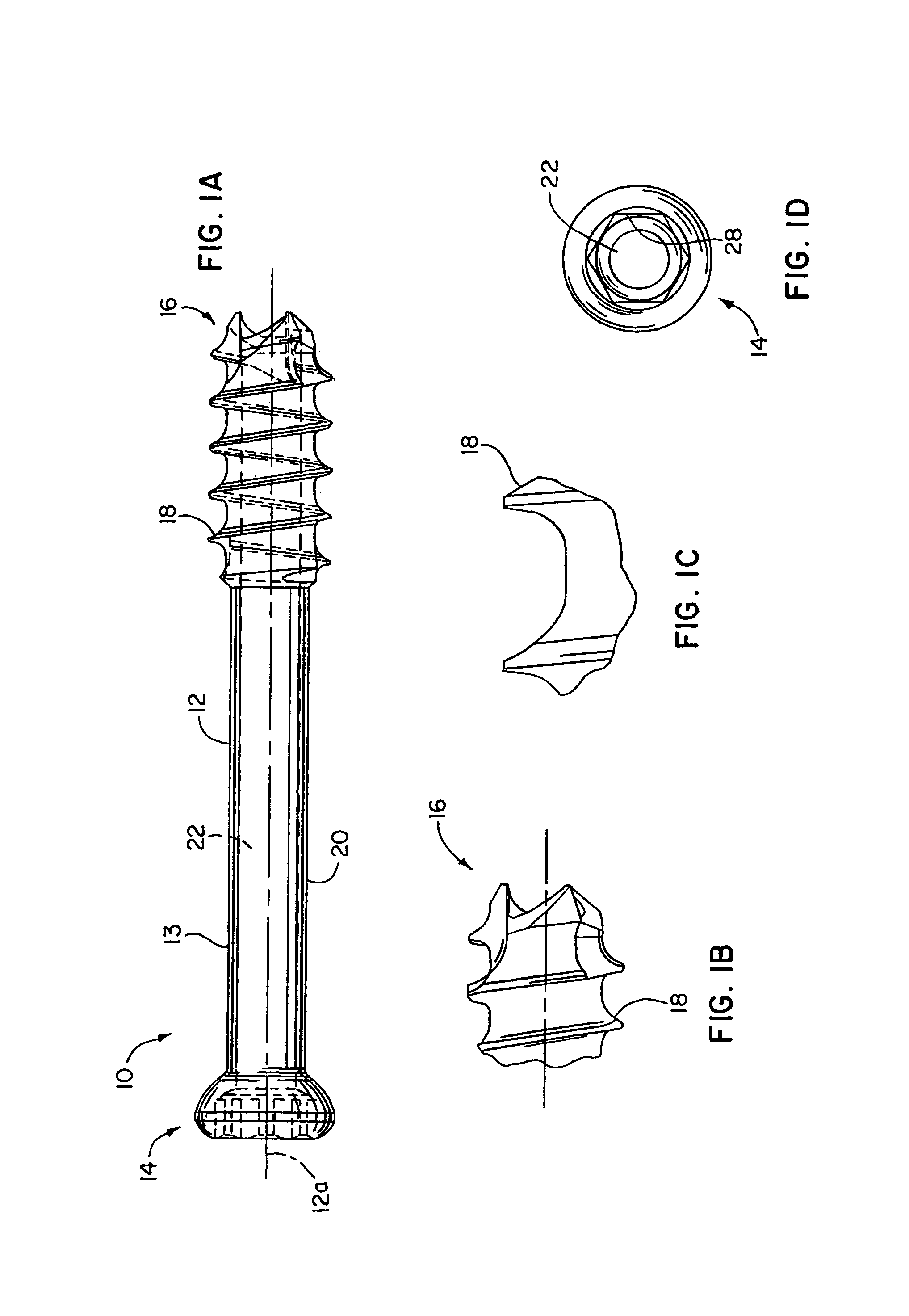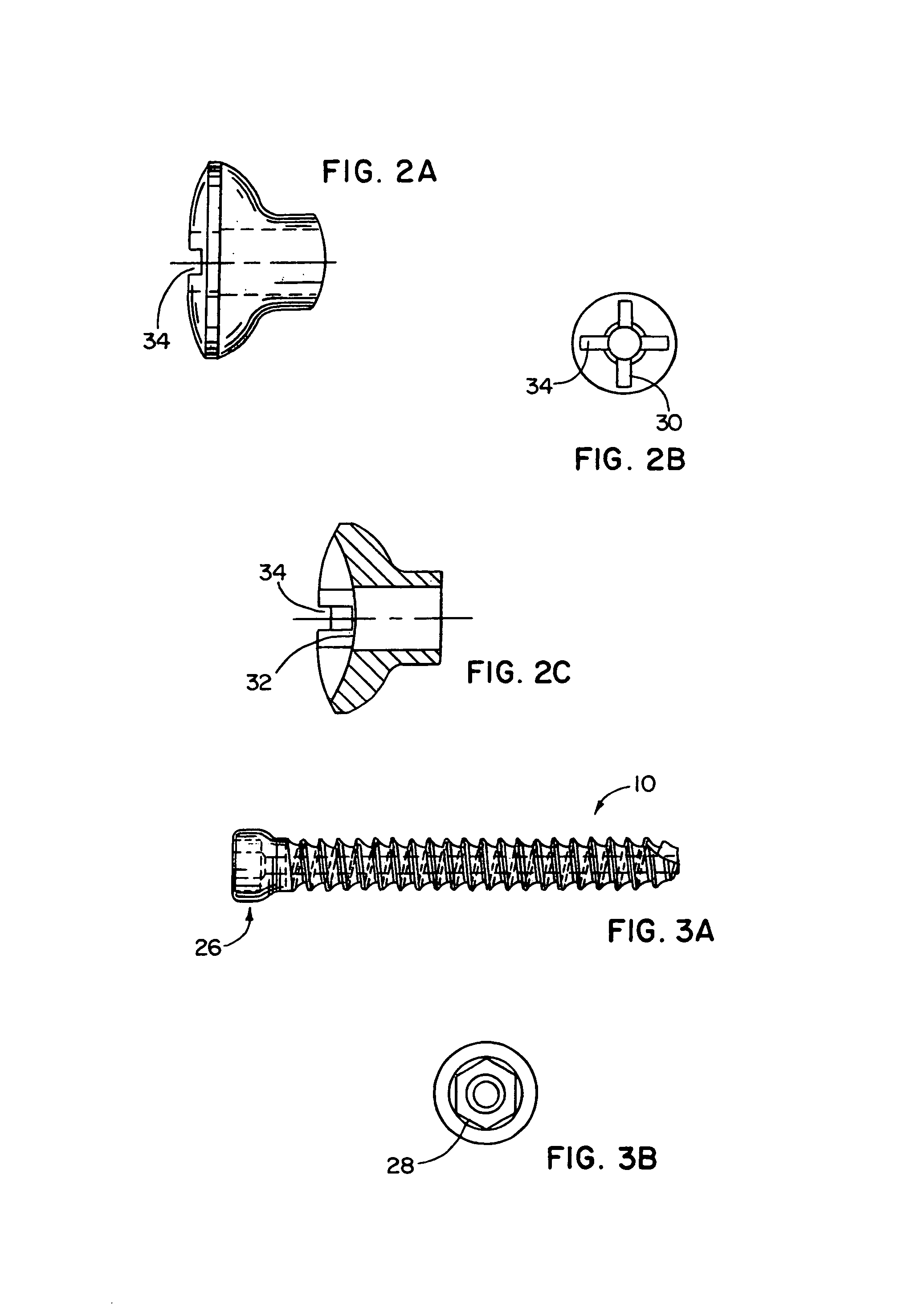Cannulated bone screw
a bone screw and cannula technology, applied in the field of bone screws, can solve the problems of large amount of screw stripping, and large amount of screw stripping, and achieve the effect of reducing the amount of screw stripping
- Summary
- Abstract
- Description
- Claims
- Application Information
AI Technical Summary
Benefits of technology
Problems solved by technology
Method used
Image
Examples
Embodiment Construction
[0020]In FIGS. 1A–1D, a screw apparatus 10 in the form of bone screw 10a for being implanted into bone material is shown having one preferred configuration thereof. The bone screw apparatus 10 has an elongate shank 12 having proximal and distal ends 14 and 16, respectively. The shank 12 has external threads 18 formed along the shank 12 between the ends 14 and 16 thereof. As shown in the screw 10 of FIG. 1A, the screw shank 12 is only partially threaded from the distal self-tapping and self-drilling end 16 to approximately mid-way along the length of the shank 12 leaving an unthreaded section 20 thereof. Alternatively, the entire length of the shank 12 less screw head 26 can be threaded, as shown in FIG. 3A.
[0021]Referring to FIG. 4 and taking measurements for one of the listed screws 10, the thread outer or major diameter can be approximately 0.138 inches or 3.5 millimeters. As can be seen in FIGS. 1A and 1D, the shank 12 has a generally annular wall 13 including a throughbore or ca...
PUM
 Login to View More
Login to View More Abstract
Description
Claims
Application Information
 Login to View More
Login to View More - R&D
- Intellectual Property
- Life Sciences
- Materials
- Tech Scout
- Unparalleled Data Quality
- Higher Quality Content
- 60% Fewer Hallucinations
Browse by: Latest US Patents, China's latest patents, Technical Efficacy Thesaurus, Application Domain, Technology Topic, Popular Technical Reports.
© 2025 PatSnap. All rights reserved.Legal|Privacy policy|Modern Slavery Act Transparency Statement|Sitemap|About US| Contact US: help@patsnap.com



